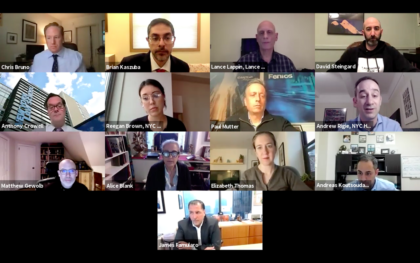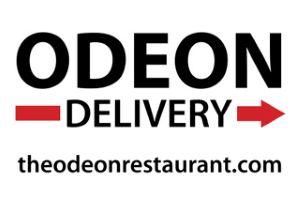New York Law School will convene task force for neighborhood recovery
After hosting a public panel discussion online last week, New York Law School is going to move ahead with a “Tribeca Pandemic Recovery Task Force,” choosing a small group of leading members (five or more) to meet twice a month beginning later in April. The group’s goal will be to “work quickly to identify priorities for both the short and long-term, culminating in a report of recommendations that might include advocacy, technical assistance, economic and community development, and sustainability and resiliency strategies.”
The dean of the law school, Anthony Crowell, will be the inaugural chair, working with a small team from within the school to choose the members from a cross-section of residents, business owners and institutional partners. “Our goal is that those who serve in the leadership roles will be highly connected within the community and will be able to represent the views of others in similar circumstances, and work collaboratively to build consensus. Others who are interested in the Task Force’s work will be asked to serve as institutional partners, advisors, and community voices as it goes forward.”
If you want to get involved, email tribecataskforce@nyls.edu.
At last week’s meeting, held on Zoom, 130 members of the public logged on to listen to a discussion between several local business owners — Lance Lappin, David Steingard from Laughing Man and Andreas Koutsoudakis Jr. from Tribeca’s Kitchen — as well as Alice Blank from CB1 and several citywide business leaders, including Andrew Rigie from the NYC Hospitality Alliance (he just got named to Crain’s 40 under 40).
Local business owners here noted that they were missing their customers (“There’s no office workers out here any more, there’s no financial district, a lot of the residential community is gone. I’ve lost half of my business because there’s nobody here,” said Lance Lappin) but also felt there was a void when trying to share information and best practices with colleagues. “What we need is something that we could all get involved in to help each other,” he said. “After 9/11, the world saw this community with a little bell at the local school — PS 234 — that rang at 8:30 every morning. What little bell can we ring now?”
One challenge, said Rigie, is to know what the neighborhood wants and needs moving forward — and then figure out how to get it. “What do you want your neighborhood to look like after? What do you want the vibe to be? The streets and retail?” And at the same time acknowledging that retail, which was already struggling before the pandemic, has even bigger issues now that people have grown accustomed to making even grocery purchases online. “What kind of stores does Tribeca want?” he asked. “And how do you get those type of businesses the rents they can afford? And how do you get residents to go there and actually purchase from them?”
The plan for the task force, I assume, is to address questions like those.
The panel discussion also addressed issues like streamlining city and community board processes for storefronts (one participant said his firm counted 50,000 vacancies from 96th Stree to the Battery); collecting data on which big businesses are bringing workers back and when; the future of outdoor dining and Open Streets; dealing with climate change and resiliency issues in a low-lying neighborhood; helping new businesses get started — and helping those who have held on for these past 12 months stay alive.
“If someone is going to take a chance in this environment and gamble on when New York is going to come back, they are going to need incentives,” said James Famularo, from Meridian Capital Group.
Rigie also noted that simply creating a volunteer board is not enough, since so many of them don’t go anywhere. The group will need follow-up steps and timelines and goals to make sure it moves forward.
But in the meantime, there was also plenty of love to go around for the neighborhood.
“People are seeing that small business is essential to the fabric of any community,” said Steingard. “I love sitting on the stoop of my business and greeting strangers like you would in a small town. It’s one of the most beautiful things. The characters involved in small business define a neighbor in more ways that anyone gives it credit for.”












was crime in Tribeca and FIDI mentioned in the recovery of downtown businesses? I missed the meeting. Hope it was.
Crime is the #1 issue, as I see it.
From serious crimes like assaults, to the less serious quality of life issues like litter, the counterfeit vendors on Canal Street, graffiti, public urination.
As for street life, I’m glad to see at least many art galleries and design stores have survived, and I welcome their presence in the neighborhood. But we do also need mundane kinds of stores, like hardware and housewares stores. I’m glad we still have Chinatown Building Supply on Walker. It’s great to have local options, not just relying on sight-unseen online shopping. I support local stores whenever possible. Would others do the same? Or has the pandemic habituated everyone to the convenience of online shopping and delivery services?
Would love to see more vegan food options in the neighborhood.
Crime is a serious issue, but what can a volunteer board do about it? We have an upcoming election. That is where we will decide collectively if crime is really an issue for us. Ask the candidates what their plan is for reducing crime.
You cannot be serious about a recovery task force without a single person of color from the neighborhood in the group.